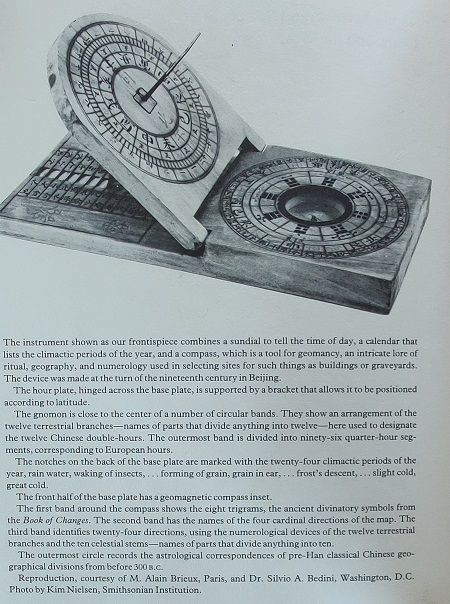This 7x7 magic square recently appeared on the side of a religious building in a very small town called Zurgena in Almeria, Spain.
Why would church authorities put such an odd matrix of numbers on a building and what does it mean?
Numerical Symbolism
The Knights Tour and the Star of David
The Knight's Tour - draw a line sequentially from number one to forty-nine.
Why would church authorities put such an odd matrix of numbers on a building and what does it mean?
Numerical Symbolism
Mystical mathematical symbolism with Magic Squares has been used by Christianity since medieval times (eighth century) as demonstrated by several book covers of illuminated manuscripts and the works of Hrabanus Maurus. Incorporating mathematical symbolism into art and architecture would identify objects and places of religious significance.
The reason for using math and squares of numbers is to acknowledge the revered Luo Shu, which appears in the central 3x3 square as the last digit of each number.
The Luo Shu
The gnomon and the Luo Shu would provide humankind with a calendar (Time) and the right angle triangle theorem (a formula for Space). In other words, the gnomon and numbers corresponded to the concepts of Time and Space and were integral to evolution and prosperity. The early Chinese, the Buddhists, the Daoists, and early Christianity all recognized this cosmology. This is why this magic square appears on this building.
If we examine the square closely we should observe the basic Pythagorean, Platonic, and Chinese characteristics:
The Luo Shu
28 | 21 | 26 | 8 | 1 | 6 | 4 | 9 | 2 | ||
23 | 25 | 27 | → | 3 | 5 | 7 | → | 3 | 5 | 7 |
24 | 29 | 22 | 4 | 9 | 2 | 8 | 1 | 6 |
The gnomon and the Luo Shu would provide humankind with a calendar (Time) and the right angle triangle theorem (a formula for Space). In other words, the gnomon and numbers corresponded to the concepts of Time and Space and were integral to evolution and prosperity. The early Chinese, the Buddhists, the Daoists, and early Christianity all recognized this cosmology. This is why this magic square appears on this building.
If we examine the square closely we should observe the basic Pythagorean, Platonic, and Chinese characteristics:
- The axis mundi
- references to space
- references to time
The above magic square meets the basic requirements for a magic square:
All the columns, rows, and major diagonals sum to 175.
The total sum of all the numbers in the square is 1,225 or 352 = (7x5)2
In addition, the magic square is symmetrical, that is, any four numbers equidistant from the center number, 25, will sum to 4 x 25 or 100, which is ten squared.
In addition, the magic square is symmetrical, that is, any four numbers equidistant from the center number, 25, will sum to 4 x 25 or 100, which is ten squared.
Let us now examine the details.
A. The inner shaded square is a 3x3 grid of the numbers 21 through 29, these numbers sum to 225 or 152. The numbers 21 through 29 are the nine centered numbers between 1 and 49.
B. The numbers of the light blue tiles that surround the central 3x3 magic square sum to 400, or 202. These are numbers 13-20 and 30-37, inclusive.
C. The numbers of just the outer perimeter sum to 600 which is not a square number but if you add the central number 25 to 600 then you get 625 or 252.
C. The numbers of just the outer perimeter sum to 600 which is not a square number but if you add the central number 25 to 600 then you get 625 or 252.
Square of Numbers | Numbers | Sum | Sum ÷ 52 |
Inner 3x3 shaded square | 21 - 29 | 225 or 152 | 32 |
Middle shaded square | 13 - 20, 30 - 37 | 400 or 202 | 42 |
Inner + Middle squares | 13 - 37 | 625 or 252 | 52 |
Perimeter shaded square | 1 - 12, 38 - 49 | 600 (+25) = 625 | 52 |
As one can see from the table above, the numerical sums from each shaded area of the magic square reduce to the 3 - 4 - 5 Pythagorean triplet
The axis mundi
The center number or axis mundi is 25 or (5)2. The center 3x3 square with the numbers 21 through 29 are also the nine centered numbers with in the numbers one through 49. These numbers also add up to a square number, 225 or152. Both of these numbers 25 and 225 symbolize the axis mundi, and 225 ÷ 25 = 9, another square number.
The axis mundi
The center number or axis mundi is 25 or (5)2. The center 3x3 square with the numbers 21 through 29 are also the nine centered numbers with in the numbers one through 49. These numbers also add up to a square number, 225 or152. Both of these numbers 25 and 225 symbolize the axis mundi, and 225 ÷ 25 = 9, another square number.
The Knights Tour and the Star of David
The Knight's Tour - draw a line sequentially from number one to forty-nine.
One of the more interesting features of the above magic square is that it features a Star of David around the axis mundi of number 25. This is a similar characteristic that was featured in a magic square in the last blog post, just below.














